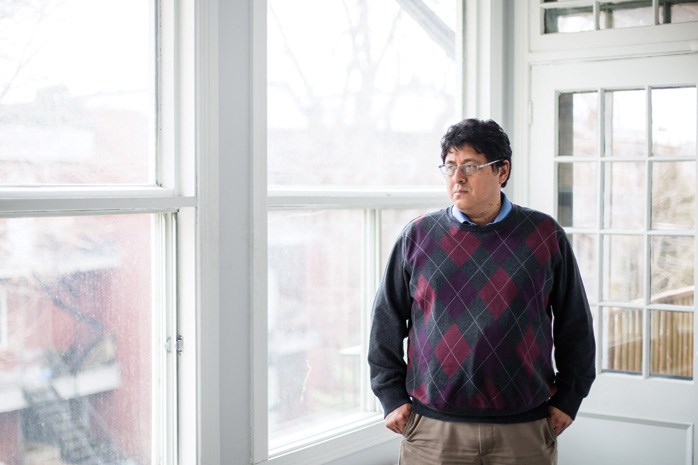Sponsored by the Canadian National Institute for the Blind
Montreal resident Franklin Vargas knows how important it is to visit your doctor of optometry regularly. His only regret is that he didn’t know sooner – because it may have helped him keep his sight for longer.
It wasn’t until age 19 that the Peruvian-born Vargas learned through an eye exam that he had retinitis pigmentosa (RP), a rare hereditary eye disease.
“It took at least 10 years to get me on track,” says Vargas. “I would have been able to manage better if my condition had been diagnosed at the beginning.”
RP affects approximately three million people worldwide. It results in a progressive loss of vision as light-sensing retinal cells (photoreceptors) are slowly damaged because of a genetic mutation.
The two most common symptoms are loss of peripheral vision (known as tunnel vision) and night blindness (nyctalopia). The tunnel vision makes mobility difficult and the night blindness, resulting in slow adjustment to darkness, can make walking at night a huge challenge, even in the earlier stages of the eye disease.
Vargas inherited RP from his father, but his parents separated before he exhibited any symptoms, so neither Vargas nor his mother was aware he’d inherited a disease that could cause severe vision loss.
Vargas, who immigrated to Canada in 1986, accepts that his vision is gradually deteriorating, but still makes regular appointments with his eye doctor to monitor the progression of the disease.
Regular eye exams also keep him up to date about any new treatments for RP. For example, in February, the U.S. Food and Drug Administration approved an implanted device that enables patients with vision loss to regain some vision, similar to how a hearing aid would assist someone with a hearing deficiency.
Fortunately, says Vargas, he has ongoing support from CNIB (Canadian National Institute for the Blind) to help him along the way. Among the many forms of assistance the charity provides him, emotional support and training in the use of assistive technology are helping Vargas retain his independence, despite vision loss.
“CNIB has helped me most by giving me knowledge. They have taught me to view my situation realistically by providing information and social support,” says Vargas. “They have helped me to face and deal with my situation over the 10 years that I have been in contact.
“I just wish that I had known about CNIB when I first came here from Peru 27 years ago.”
Among the devices that help him cope with his vision loss and maximize his remaining vision are an extra large computer monitor and a keyboard with large lettering, night-vision goggles, various magnifiers, telescopes, a GPS and an accessible smartphone.
He emphasizes that one of his primary goals is being independent and, after he was finally able to re-establish contact with his father, still living in Peru, he became even more focused on self-sufficiency.
“I reconnected with him 15 years ago,” says Vargas. “I see clearly that I am more able than he is [to handle my situation] because he didn’t deal with his eye condition. But I have learned to adapt to my condition and make more use of my other senses. This is very important to me.”
The sight Vargas has lost can never be recovered, but because of what he knows today, he’s understandably alert to any change in his children’s vision.
“Neither of my children – one is 22, the other is five – shows any signs of the condition, although they could be carriers,” he says. “I wish them to have as much information as possible on the subject and would like everybody in general to understand that they should take good care of their visual health.
“It is very important to have regular eye checkups and to go to a doctor of optometry for treatment as early as possible.”
May is Vision Health Month. Learn more at eyesareforlife.ca.



